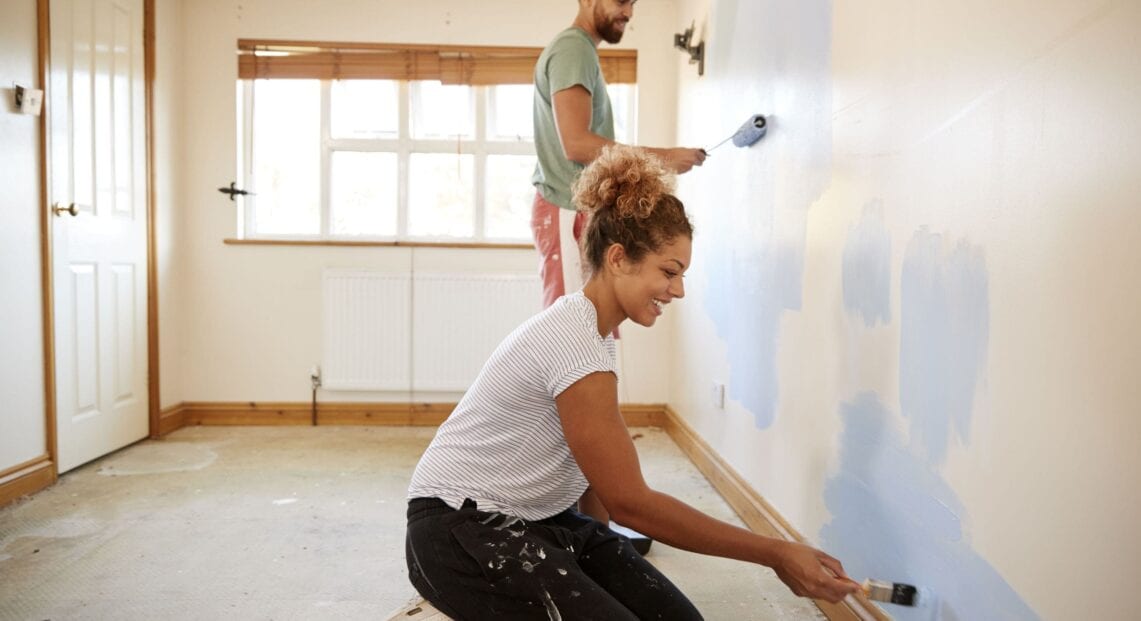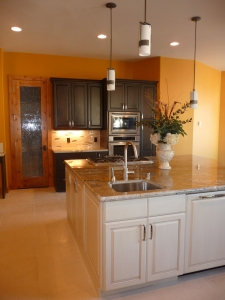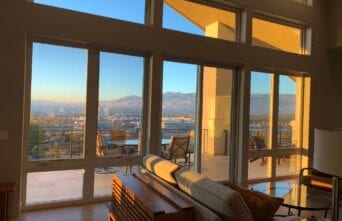Paint Me Perfect With 7 Easy Tips

Selecting the perfect paint colors is just about the most important decision for a beautiful and balanced design that will be made for any home construction project. It is easy to pick good color. However, the results from a good color and a great choice are a WORLD apart. Paint selection will add the most direct value for the amount of time and material investment of any design choices made. I believe that we can all agree; it’s the one single thing that is done poorly most often. Many folks change paint fairly often, feeling that it is more of a fashion statement and should be changed to suit their emotional health and well-being. If you are looking for a balanced, holistic design that adds to your emotional well-being from the moment you enter your home until your next required outing, enter this decision making process very wisely.
Color is reflective. It is entirely dependent on what other colors (light really) is reflecting off of it. Without getting too scientific here, I’d like to make an important point. Paint colors are the glue that will hold your design together. You will want to pick out a color that is specific to your design in your own home. All of the materials in your home are going to be affected by, and reflect off of that color even when they are in different rooms. Our brains have an amazing capacity to acclimate to our surroundings. When we leave one room and go to another, it takes us a while to acclimate to the new surroundings. Consistency, will create harmony, even for

bold designs.
If you understand what I am saying, you can understand why picking out a fabulous color from a home improvement magazine or store display is not going to give you the best value for your investment of time, materials and possibly professional services.
I have 7 simple tips for selecting the perfect paint color for your special environment:
- Never pick out colors from the small (or even medium sized) paint chip samples given away for free from the store. They are worth exactly what you pay for them. Always pick out at least a couple sound selections from those chips and purchase the smallest amount possible in the same sheen you will be using for your project. (I’ll go into sheens in more detail next post)
- Find your color ideas in materials you already have. Those materials are your color palette that you will be working with. When designing a kitchen or bathroom with a stone counter, the stone becomes my color palette. If the paint color tone is complementary to what is in there, it’s going to work beautifully with all other selections. I hate to be the party crasher for some of you but, only one accent paint color is needed in each room.
- Always paint your samples on a large piece of poster board. My size of preference is about 16”x 20”. I find them at the $1 store. Paint the samples generously so that none of the white is showing through. This may require a second coat. There is an urban legend that a lot of folks follow which has you painting all of your colors on the wall, and then even next to each other! when deciding on color. Preparing for this post, I found several so called home improvement advice sites that suggest this very thing. If after reading this post if you think this is still a good idea, seek the help of a professional (designer- of course!).
- When you have your samples painted large and in charge, put them in the pile with your other materials i.e. cabinet doors, tile, fabrics, upholstery, carpet. You can walk around with your samples; hang them next to those materials that are locked in place. Make sure you have good lighting, we become more color blind with less light. By carrying your samples around, you can more easily control your light. Sunlight is best, but not necessary.
- Remember the 3 second rule: When you look at your selections all together, if you don’t love it immediately, you need to persevere in your search for the most perfect match. When your friends see you in your outfit, do you want them to have to think for even 3 seconds about whether or not you are coordinated? Do you want them to have to “live with it” for a while to see if they grow to like it? Same with your home. Keep trying other colors with new samples. It can become tedious, but it will be entirely worth the effort.
- White is a color. There is no such thing as “just white”. All whites have reflective properties. Some will reflect more blue and some more yellow while some are both-green. Just going with white is not any more of a safe choice than any other color you can select. If you’re a fan of whites it’s great as your neutral base color, but you still want to go through the same selection process detailed above.
- When starting with a clean color slate inside, consider the colors outside as part of your outfit. If you are looking at an exterior wall of your home or fence through your window, unless you’re planning on keeping your blinds closed, those colors become part of your inside as well. This does not mean that your interiors must be green or brown, but when you open your front door to invite your guest in, think of the colors they’ve become acclimated to on your porch.
If you have chosen the most perfect colors for your special and unique home, you will find no need to change them unless you find yourself in the midst of a large remodeling project when your corner stone materials are changing. Your paint will complement all of the other selections you’ve made and add value to your home as well as your sense of well-being.
What are your thoughts or experiences with regard to color. This is a fascinating subject. Please share!


